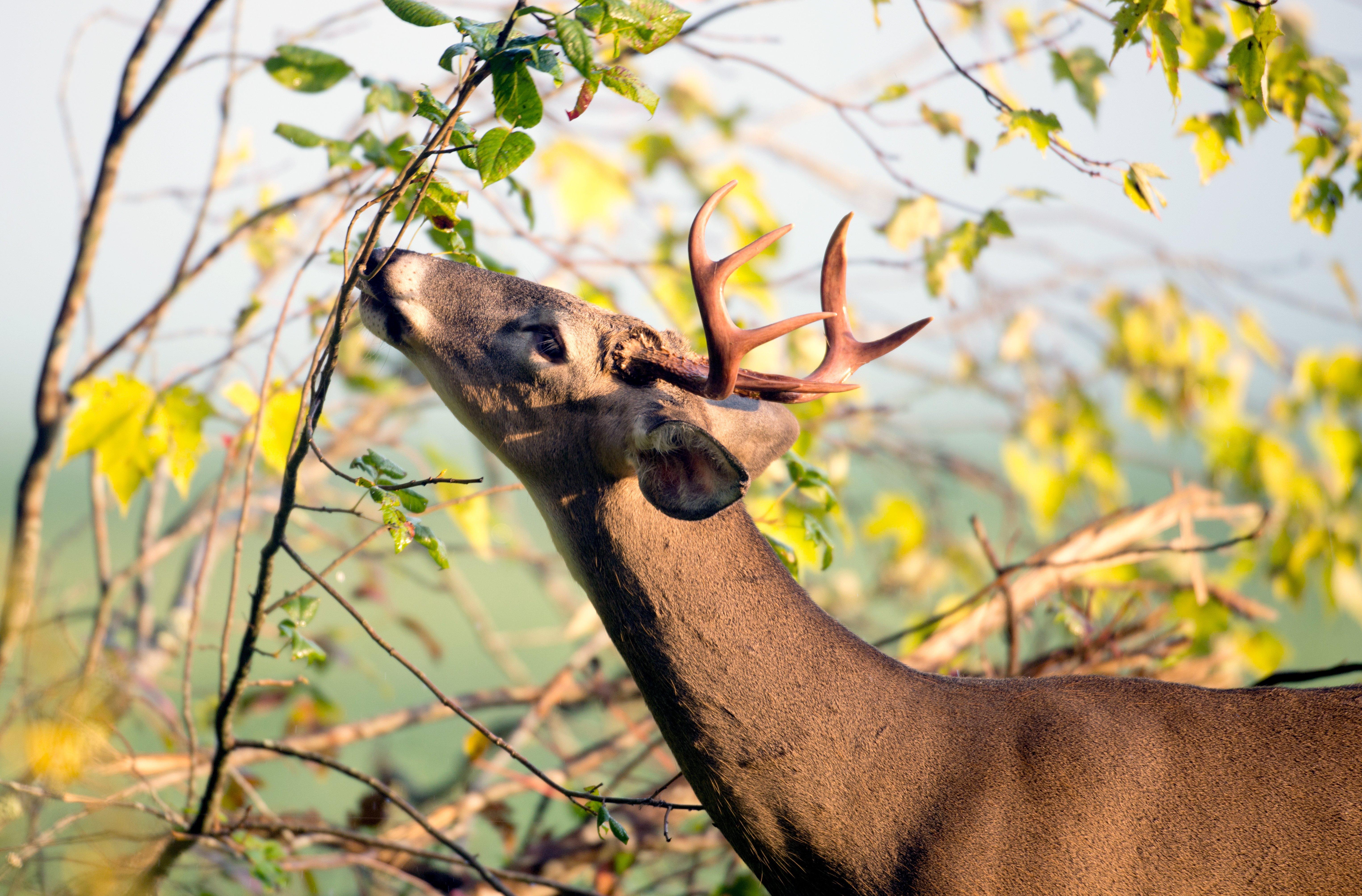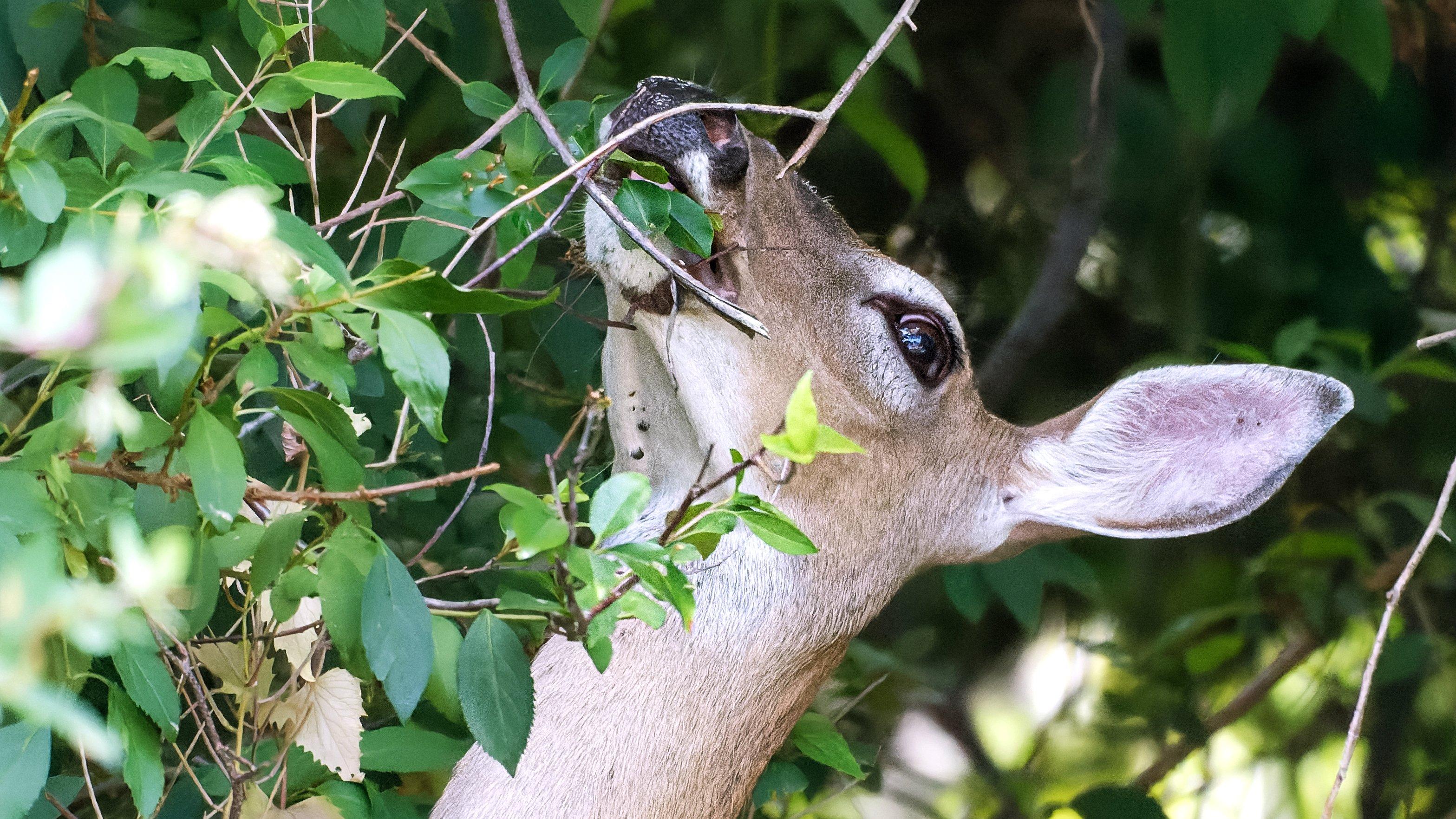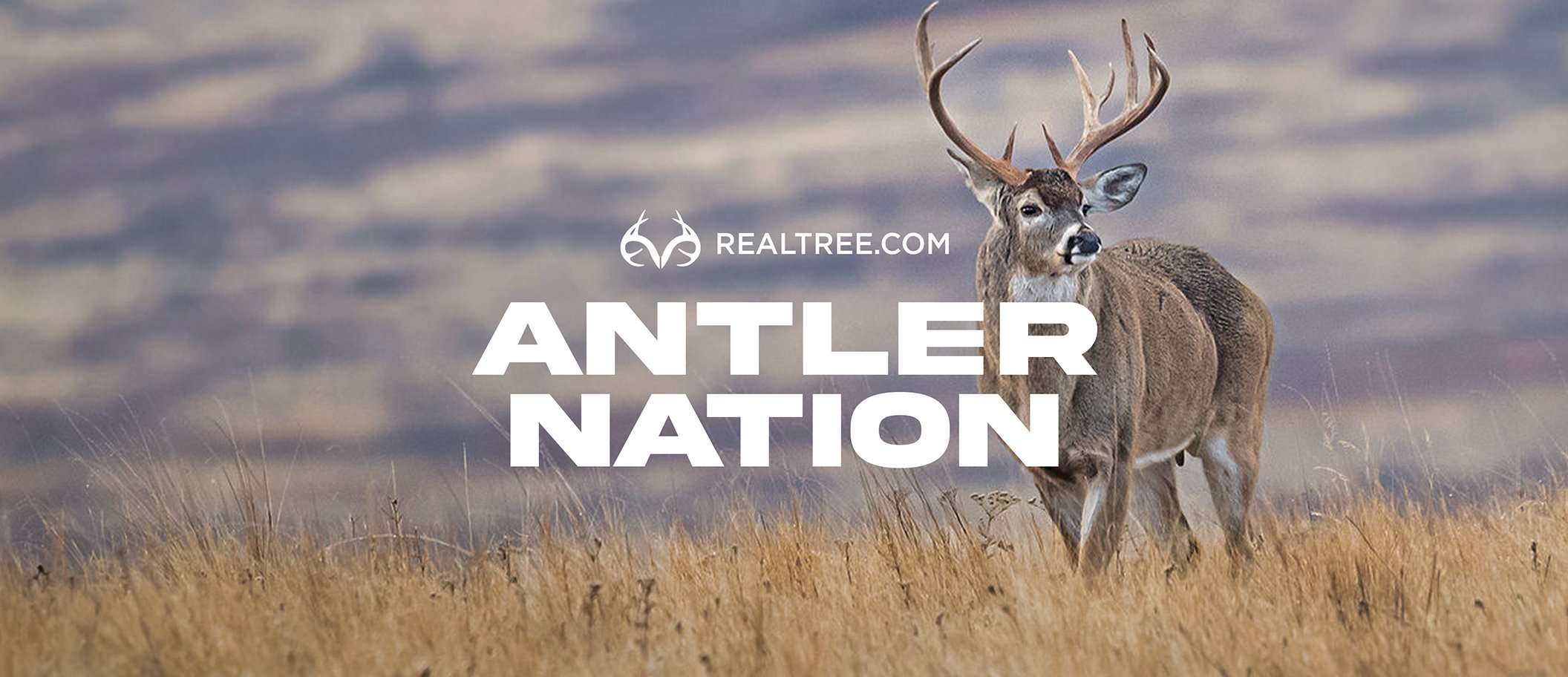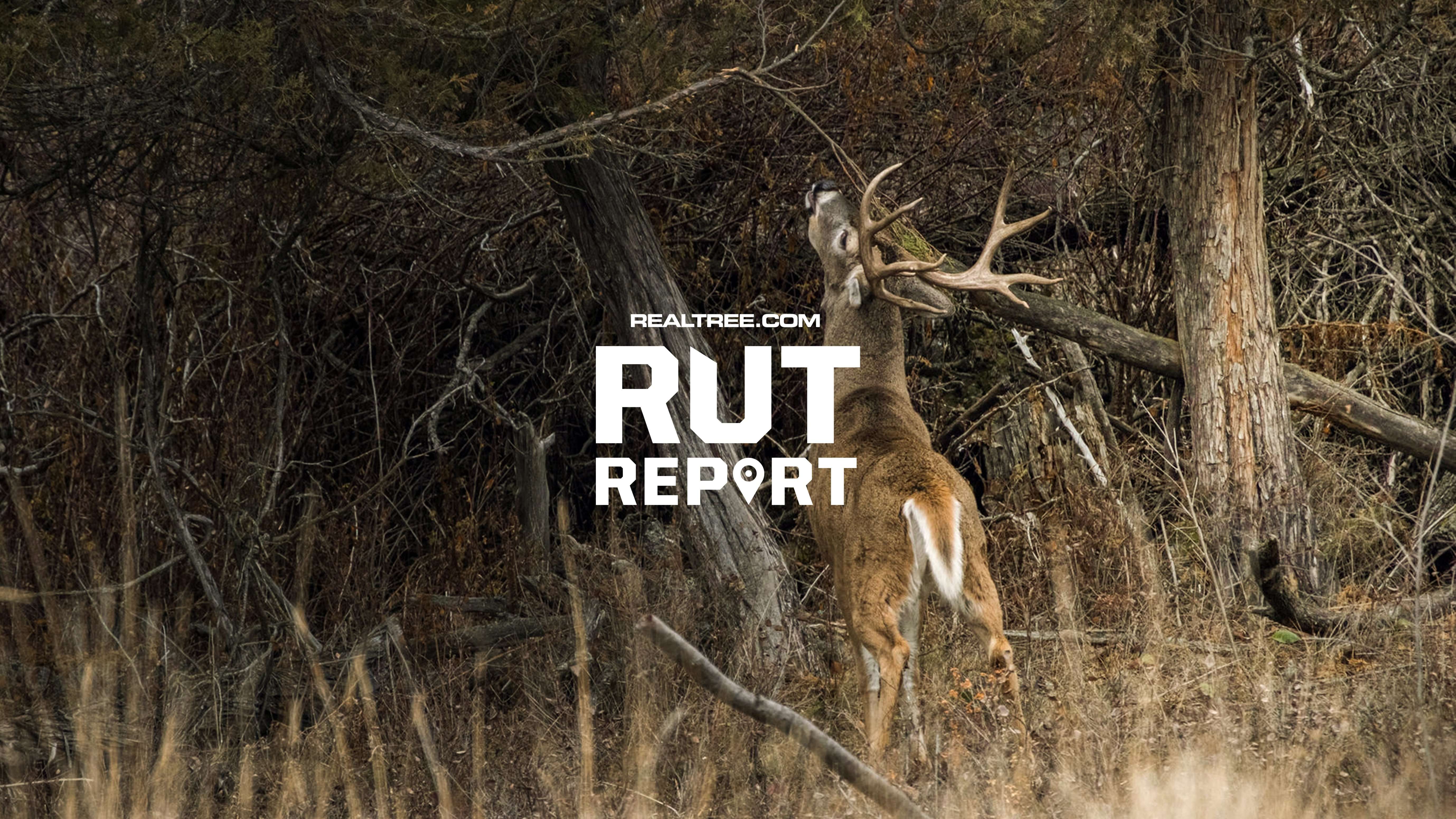Faced with untillable land, the author finds a way to supercharge the deer forage that’s already on his lease

After conducting research, the author discovered whitetails prefer fertilized to unfertilized natural browse. (Photo by Tony Campbell)
As this past hunting season approached, I wanted to create a food plot on my lease in western Texas. But the ground was too rocky and the slopes too acute. What little tillable soil there is on the north side of the property is covered with juniper and several species of oaks, broken by narrow canyons filled with occasional stands of Smilax or greenbriar.
Baiting is legal in Texas. But, I still wanted to establish food plots in remote places far from pasture roads. With traditional food plots out of the question, I decided to create “natural” food plots by applying fertilizer to select native plants — something I had done on other properties before .
Early in my wildlife biologist career I conducted deer nutrition research and spent time doing deer browse manipulation studies. On a whim I fertilized individual greenbriar and yaupon plants, knowing both were prime evergreen browse species. Within two weeks of fertilizing individual plants I noticed deer were walking past other greenbriar and yaupons to feed on those plants I had fertilized. I also noticed those plants were more “robust” and produced more new growth than those that had not been fertilized.
Don’t Miss: The 5 Biggest Reasons You Don’t Shoot Big Bucks
I analyzed samples of fertilized and unfertilized yaupon and Smilax. All nutrients levels were higher in the fertilized plants. No wonder the deer searched out the fertilized plants as they have an innate ability to discern the most palatable and nutritious plants in their area. Realizing what was happening I fertilized adjacent yaupons as well as low-growing greenbriars to create a “natural food plot.”
On a lease in northwestern Kentucky a few years ago, I also fertilized several clumps of greenbriar, those with vines deer could reach. Deer almost immediately started searching out and feeding on the fertilized plants, bypassing all others.
The Kentucky lease had several huge stands of white oaks and in other areas lots of persimmon trees. Two large slopes in particular faced the expansive Ohio River. One was covered with persimmon trees, the other primarily white oaks. We leased the property in January. That February I bought several bags of Triple 13 fertilizer. I carried a couple of bags into the middle of the persimmon “forest.” There, I selected 20 mature adjacent trees and dug shallow trenches around each of the trees’ drip-line — the outermost limbs where a tree’s feeder roots are found. I poured fertilizer into the shallow trenches surrounding the trees, then covered them with soil.

Fertilized browse can pay off well into the future. (Photo by Veronica Winters)
I did the same with 20 adjacent white oaks in the center of a 30-acre stand of acorn-producing trees. Fertilizer applied, I built two log ground blinds at each site. I positioned them so I could hunt my new plots regardless of wind direction. I knew from previous experience and research fertilized white oaks and persimmon trees would produce “sweeter,” more palatable acorns and fruit than that produced by other mast producing trees in the area.
Don’t Miss: 5 Reasons to Use A Deer Decoy This Fall
Acorns from fertilized trees have less tannic acid and are more desired by deer than those produced by unfertilized trees. Deer quickly pick up on this difference and search out fertilized mast, when available. I deliberately established these natural food plots where deer congregated because of the available mast. Interestingly, even in these prime feeding areas with abundant food, deer bypassed all the other persimmon and white oak trees to feed on mast from the fertilized trees.
That fall I took a huge typical 11-point after he walked to the center of the white oak covered slope to feed on acorns from my fertilized trees. I watched him bypass other fallen acorns to feed on those in my natural food plot.
Another time I fertilized Smilax near an abandoned home site where greenbriar grew on an old barbed wire fence. It was there that I shot my best Kentucky buck while he fed on fertilized greenbriar. Had he not broken a front tine, he would easily have made Boone & Crockett. He still gross-scored in the 180s.
I continued fertilizing those same natural food plots each year we had the lease. And I took several impressive bucks there. Creating natural food plots on my lease in arid western Texas worked equally well this past hunting season. I took a couple of older mature bucks in the immediate area of the fertilized greenbriar. My natural food plots will undoubtedly continue to pay dividends well into the future.












